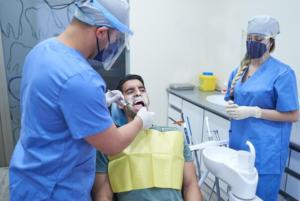
This article aims to illuminate this complex condition by providing straightforward and accurate information about its causes, effects, and treatment options. Whether you or a loved one are personally affected by scoliosis or you simply seek a deeper understanding of this condition, this article is your comprehensive guide to understanding the curves associated with scoliosis. From the basics of scoliosis to the different types of curves and their implications, we will delve into the depths of this condition, dispelling myths and providing you with reliable information.
How Affects the Body
One of the main effects of scoliosis is an asymmetrical appearance of the body. As the spine curves, it can cause the shoulders, hips, and waist to become uneven. It can lead to a visible imbalance in posture, which can affect a person’s self-esteem and confidence. Scoliosis can cause back pain and discomfort, as the abnormal curves pressure the spinal discs and nerves.
Scoliosis can impact the functioning of other bodily systems. The abnormal curvature of the spine can lead to reduced lung capacity, as it restricts the space available for the lungs to expand. It can result in difficulty breathing, especially during physical activities.
Scoliosis can affect the digestive system, leading to problems such as acid reflux and difficulty swallowing. The effects of scoliosis can vary from mild to severe, and individuals need to seek appropriate treatment and management options to minimise its impact on their daily lives.
Strategies for Scoliosis Management
One of the most essential aspects of scoliosis management is developing a solid support network. It can include medical professionals, such as orthopaedic specialists or physical therapists, who can provide guidance and treatment options. Joining a support group or connecting with others with scoliosis can offer valuable emotional support and practical advice.
Regular exercise, especially activities that strengthen the core muscles, can help improve posture and reduce pain. Stretching and practising good body mechanics can also alleviate some of the discomfort associated with scoliosis. Some individuals may also benefit from wearing a back brace, which can provide stability and prevent the curve from worsening.
Understanding one’s scoliosis curve and its implications is essential for effective management. Individuals can make informed decisions about their treatment options by being aware of their limitations and seeking appropriate medical advice. Whether through physical therapy, bracing, or, in severe cases, surgery, finding the right approach to managing scoliosis can significantly reduce pain and improve overall quality of life.
The Future of Scoliosis Research and Treatment
The future of scoliosis research and treatment holds promising advancements that aim to revolutionise the management of this spinal condition.
With the rapid progress in medical imaging technologies, such as 3D modelling and AI-assisted diagnostics, clinicians will gain more precise insights into the progression of scoliosis and individual patient cases. Genetic research will play a pivotal role in understanding the underlying causes of scoliosis, leading to personalised treatment approaches.
Non-invasive treatments like specialised exercises, braces, and minimally invasive surgical techniques will continue to evolve, minimising the impact on patients’ daily lives. Regenerative medicine and tissue engineering might offer novel solutions for spinal curvature correction.
Collaborative efforts between researchers, clinicians, and engineers will drive innovation, enhancing early detection, intervention, and overall quality of life for individuals affected by scoliosis.






